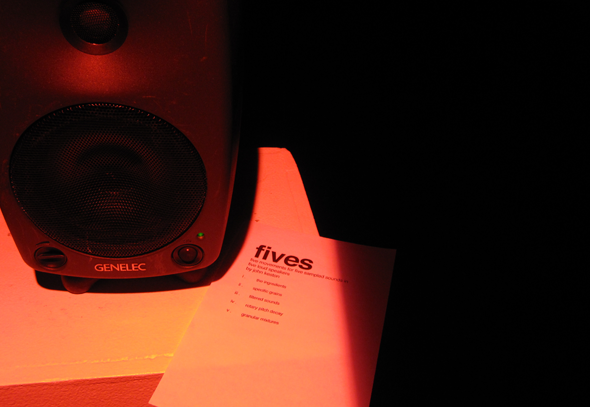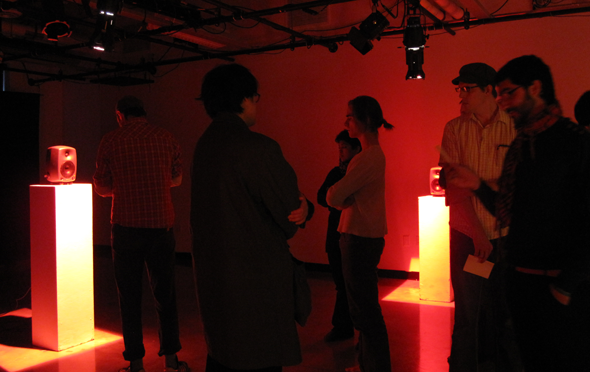
On Tuesday, December 7, 2009 I presented a sound art installation titled, Fives, at the University of Minnesota. The subtitle of the work is, Five Movements for Five Sampled Sounds in Five Loud Speakers. To produce the sound for the work I developed an instrument designed to explore granular interpretations of digitized waveforms. The instrument was controlled over a wireless network with a multi-touch device. The sound objects generated were amplified through five distinct loud speakers arranged on pedestals at about chest height in a pentagonal configuration.

Each of the five movements in the piece were written to highlight features that I built into the instrument and the samples that I produced for it.
I. The Ingredients involved playing granules of the samples individually.
II. Specific Grains continued the granular exploration through the juxtaposition of various sound objects discovered through improvisation with the instrument.
III. Filtered Sounds illustrated the use of the accelerometer as a way to process the sound objects.
IV. Rotary Pitch Decay linked a virtual dial on the controller to the play speed and direction of the sound objects. Variable “friction” on the dial caused the pitch to decay over adjustable timescales.
V. Granular Mixtures comprised a mash-up of the techniques possible with the instrument and closed with five subdued grains that died off one at a time leaving a final sound at the conclusion of the piece.

The following audio example is a study for the piece in stereo using panning to simulate each of the five channels necessary for the performance. Hard left is channel one, ninety degrees is channel two, one-hundred-eighty degrees is channel three, two-hundred-seventy degrees is channel four, and hard right is channel five. The second movement starts at 5:05, followed by the third at 7:15, the fourth at 9:58, and concluding with the fifth movement at 11:57.
Fives Study in Stereo: